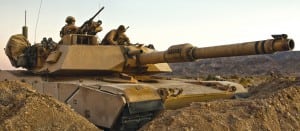
HUNTSVILLE, Ala. – The Army wants next-generation combat vehicle prototypes for soldiers to test within four years, at which point it will decide whether to replace the Abrams tank, the Bradley Fighting Vehicle or both.It isn’t yet known which legacy vehicle the Next-Generation Combat Vehicle (NGCV) will replace, said Col. William Nuckols, director of the Mounted Requirements Division at the Army Maneuver Center of Excellence.“Were not certain if it’s going to be a replacement for the Bradley, in other words…

 By
By 











